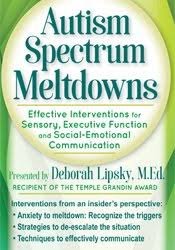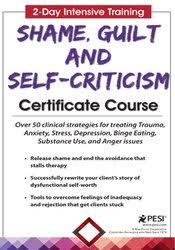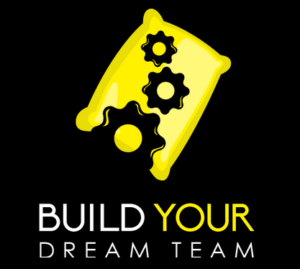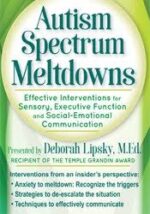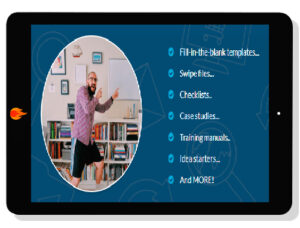Individuals on the autism spectrum often react very strongly to seemingly minor changes in routine, patterns, food, clothing, noise, and a host of other environmental factors.
Deborah Lipsky – Autism Spectrum Meltdowns
The Neurological and Physiological Differences of Autism
Sensory and Visual Environments
Sensory evaluation: Asking the right questions
Large motor skills, fine motor skills, eating, hearing, smell, touch
Creating a sensory friendly environment
Impact of sensory dysfunction on learning, behavior and social interaction
Executive Function (EF)
Impact of EF on daily life
EF manifestations seen in meltdowns
Strategies to limit consequences of EF
Social/Emotional Communication
Common pitfalls in communicating with individuals with autism
Communication differences with autism
Impact on learning, behavior and social interaction
Strategies to help facilitate communication
Anxiety to Meltdown
Recognizing the triggers
What does a meltdown look like?
What a person with autism experiences during a meltdown
Common behaviors seen in meltdowns
Meltdown or tantrum?
Effective Behavioral Interventions Based on the S.C.A.R.E.D. Model
Behavior as a form of communication
Inappropriate interventions … What never to do
Appropriate strategies to de-escalate the situation
Intervention in the school system
Creating a personalized intervention/crisis plan
Would you like to receive Deborah Lipsky – Autism Spectrum Meltdowns ?
Description:
What causes the unusually strong reactions of a meltdown?
Can you see it coming?
Is it a meltdown or a tantrum?
Is it willful, manipulative behavior?
Is ‘Fight or Flight’ the only option?
Individuals on the autism spectrum often react very strongly to seemingly minor changes in routine, patterns, food, clothing, noise, and a host of other environmental factors. Understanding and recognizing personal triggers will be a major benefit in developing a plan for yourself or individuals you work with to lower the levels of anxiety and avoid a catastrophic reaction.
Deborah Lipsky, M.Ed., presents a rare and unique perspective from someone who lives with autism every day. Through a combination of personal experiences with professional knowledge she will offer you a rare glimpse into the neurological processing differences of an individual with autism and explain the physical and mental processes of a meltdown. You will participate in interactive exercises where you are “autistic” for a moment to gain a greater appreciation of the challenges individuals with autism face. You will learn how to recognize the differences between a meltdown and a behavioral tantrum and what can trigger a meltdown. You will walk away with effective intervention strategies to use before, during, and after a meltdown.

